
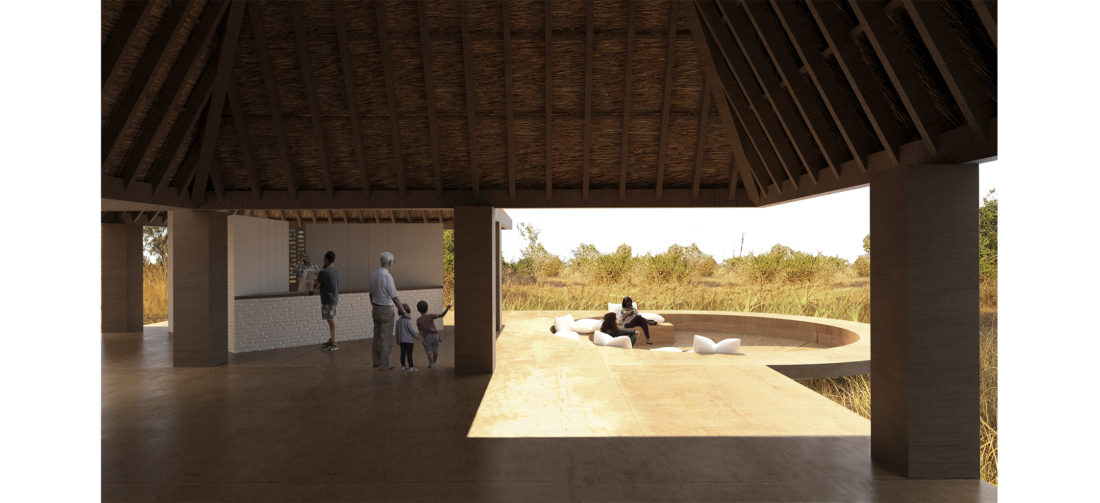
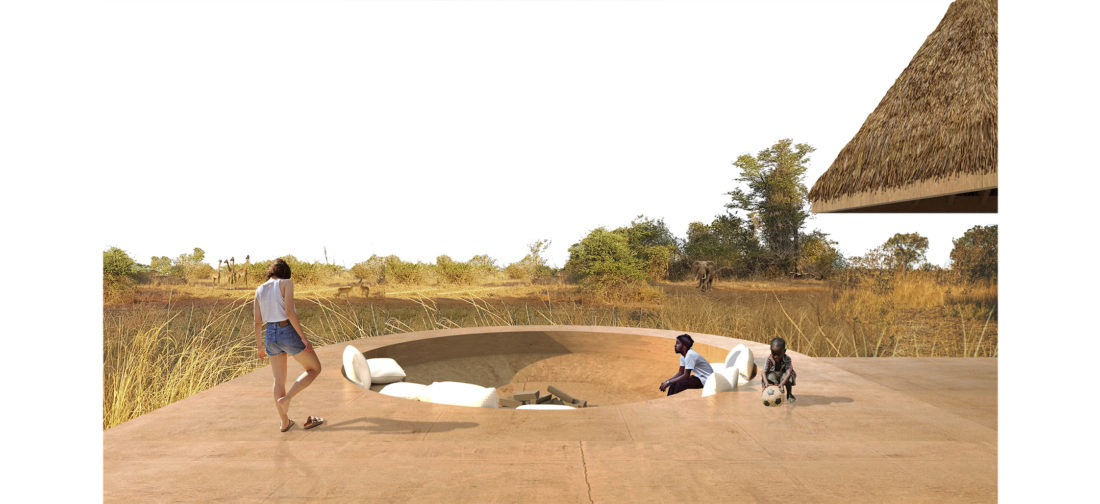
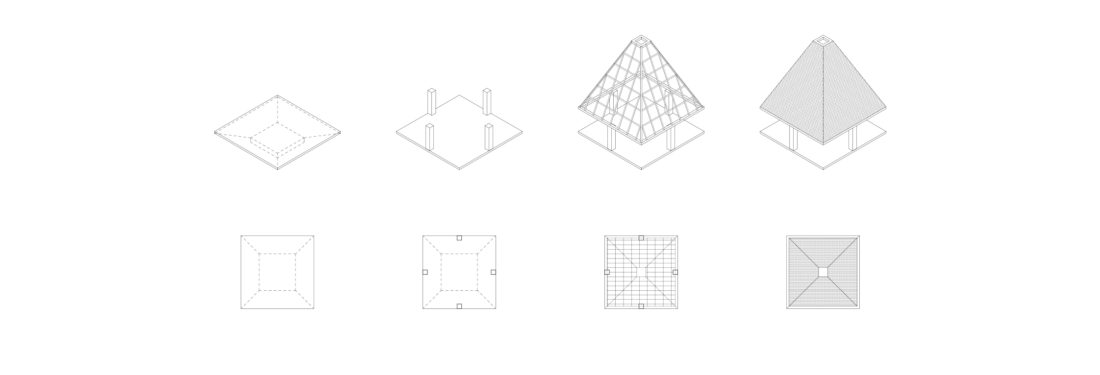

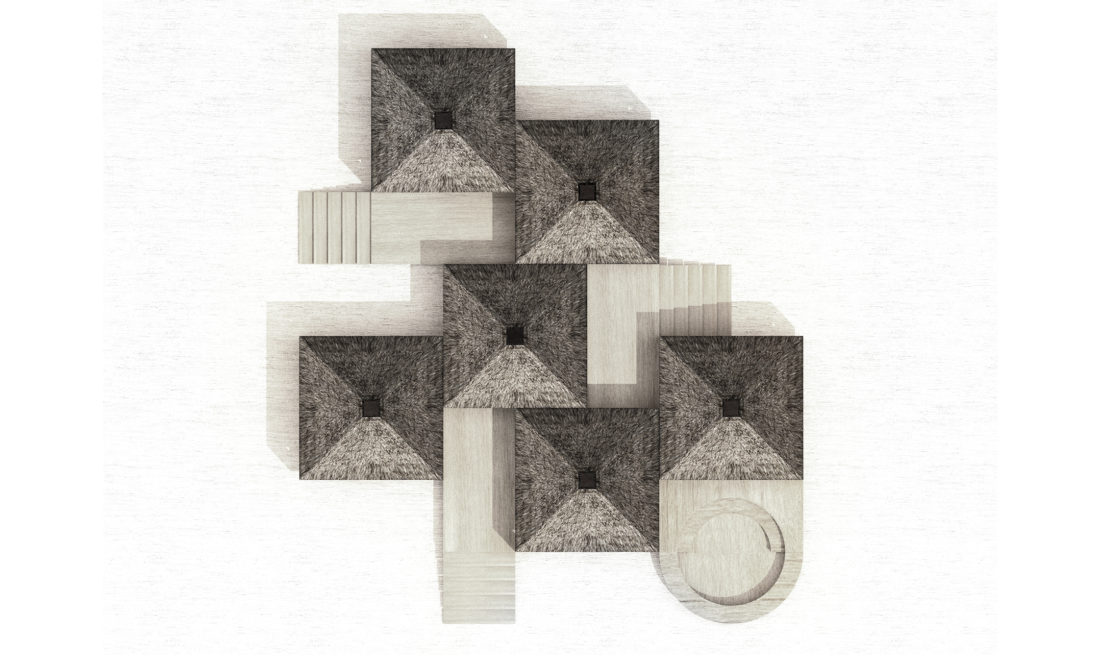
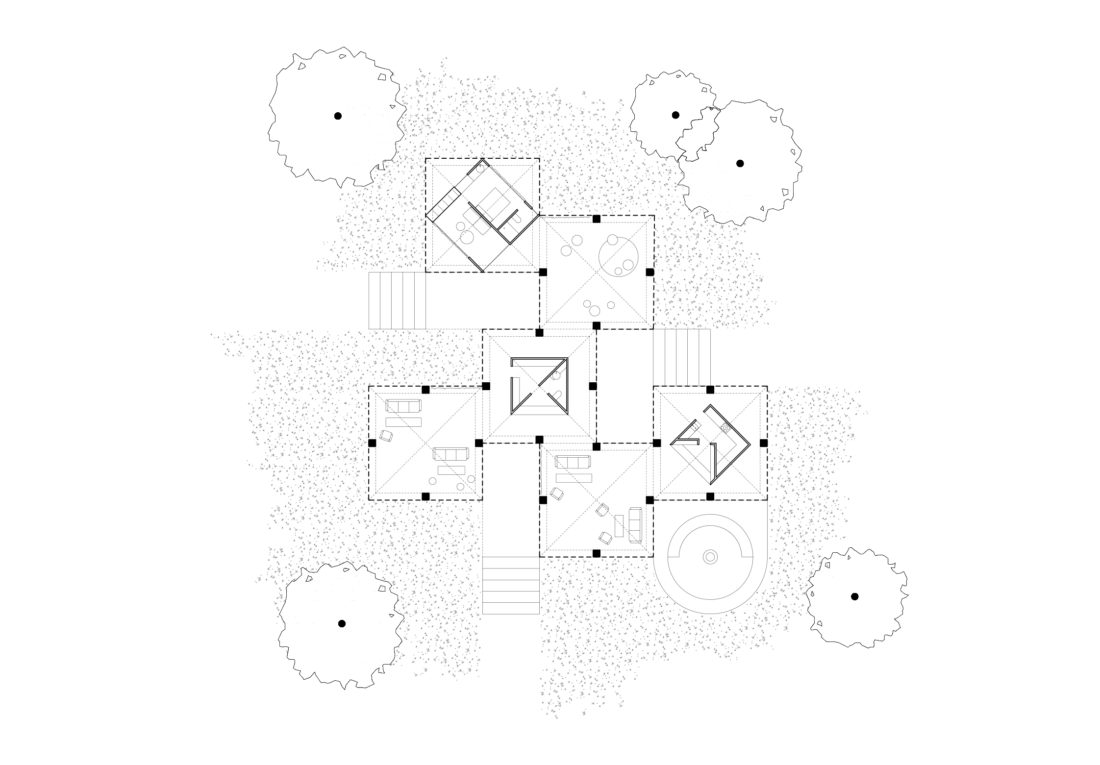
KPS SAFARI CAMP
FASE . PHASE
En proyecto, 2020
_
LOCALIZACIÓN . LOCATION
Kenia
_
SUPERFICIE . AREA
1215 m2
_
EQUIPO . TEAM
Nacho Juan, Clara Cantó, Jose Iborra, Ana Riera, María Mateo, Belén Iglesias
Otro lugar, otra cultura, otros medios, otras manos.
El primero objetivo de este proyecto es tratar de materializar la idea de no construir, de entender que éste es un lugar que pertenece a la Naturaleza y que uno sólo se puede posar en ella para observar, sin interrumpir ni alterar su equilibrio.
Los medios y materiales autóctonos aparentemente establecen limitaciones que, una vez entendidas y estudiadas, se convierten en el verdadero origen del proyecto. La cultura del lugar y su propia manera de construir evidencian el camino a seguir; agrupaciones de unidades más o menos aleatorias, texturas y sombras configuran el contexto arquitectónico local.
Es por todo esto que el proyecto se plantea desde la concepción de un módulo de medidas acotadas cuya repetición, agregación y deslizamiento pueda configurar un espacio común, conectado pero a su vez capaz de distinguir diferentes espacios. Un único plano horizontal cubierto por una secuencia de sensaciones y secciones cambiantes. El módulo, de 8x8m, desplaza su estructura vertical desde las esquinas hasta sus ejes con el fin de liberar los encuentros entre unidades y facilitar su conexión espacial. La posición de los soportes, limitada a un elemento por cada uno de sus lados, aligera su percepción desafiando a su estabilidad visual.
La variación de las alturas de las cubiertas entre 3 cotas distintas acaba de dotar al conjunto de la vibración pretendida.
Técnicas y materiales autóctonos concebidos desde una geometría y naturaleza estructural alternativa para disfrutar de un entorno único.
Another place, another culture, other tools, other hands.
The first objective of this project is to try to materialize the idea of not building, to understand that this is a place that belongs to Nature and that one can only pose in it to observe, without interrupting or altering its balance.
The native works and materials apparently establish limitations that, once understood and studied, become the true origin of the project. The culture of the place and its own way of building show the way forward; more or less random groupings of units, textures and shadows configure the local architectural context.
It is for all this that the project arises from the conception of a module of bounded measures whose repetition, aggregation and sliding can configure a common space, connected but at the same time capable of distinguishing different spaces. A single horizontal plane covered by a sequence of sensations and changing sections.
The 8x8m module moves its vertical structure from the corners to its axes in order to free up the encounters between units and facilitate their spatial connection. The position of the supports, limited to one element on each of its sides, lightens its perception by challenging its visual stability.
The variation of the heights of the ceilings between 3 different heights has just provided the set with the intended vibration.
Native techniques and materials conceived from an alternative geometry and structural to enjoy a unique environment.
